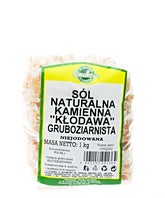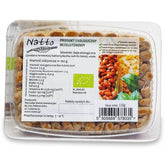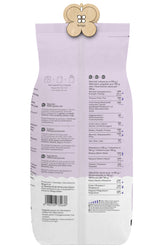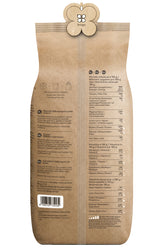Capsaicin - a few words about chili
- What exactly is capsaicin?
- Scoville scale (SHU) - a measure of the amount of capsaicin in the product
- Health-promoting properties of capsaicin
- Can capsaicin help you lose excess body weight?
- Capsaicin and digestion
- Antibacterial effect of capsaicin
- Can capsaicin help treat Alzheimer's disease?
- Is capsaicin safe for health?
- Summary
Many of the world's well-known and cherished cuisines are based on spicy-tasting products and spices. Some exotic dishes are so hot that consuming them can be a real problem. Therefore, the question arises: what is responsible for their specific taste and smell? The answer is capsaicin. It is this substance that can be found in chili peppers, jalapeno peppers, Indian hot curry, and even pepper spray. In this article, we will attempt to thoroughly describe this interesting substance and reveal its potentially positive and negative effects on the human body. We wish you pleasant reading.
What exactly is capsaicin?
Capsaicin is a chemical compound classified as an alkaloid, although it is not a typical member of this group. It occurs naturally in plants, and its pungent, burning taste is thought to deter herbivores from consuming such plants, but it also protects them from bacteria and fungi. The more of this substance we consume, the more powerful its effect on our bodies, and the more intense the effects, such as burning and a burning sensation in the mouth. In its pure form, it is a white, crystalline powder. Capsaicin was first described in 1816 and isolated from plants at that time. Interestingly, the sensation of spiciness after consuming this chemical compound is independent of the temperature of the product consumed. After all, it acts directly on neurons responsible for the sensation of pain and heat. It's worth noting that each of us has a different tolerance to these stimuli, and it's also possible for the body to become accustomed to the effects of this substance. This effect can be compared to caffeine, where when we consume coffee, after some time we need to drink more of it to achieve the same effect of stimulating the body.
Scoville scale (SHU) - a measure of the amount of capsaicin in the product
The Scoville scale (SHU) is used to determine the amount of capsaicin. It is estimated that one gram of this substance corresponds to 15 to 16 million SHU units. Likewise, the higher the value, the spicier the product's taste and the stronger the body's reaction. Therefore, we present some examples of the spiciness of individual products:
- Peppers - 0 SHU
- Jalapeno pepper and Tabasco sauce - 2500 - 5000 SHU
- Serrano peppers - 10,000 - 23,000 SHU
- Chili Cayenne Pepper - 30,000 - 50,000 SHU
- Thai chili - 50,000 - 100,000 SHU
- Habanero peppers - 100,000 - 350,000 SHU
- Habanero Savinas Red Pepper - 350,000 - 580,000 SHU
- Police pepper spray - approx. 2,000,000 SHU
- Caroline Reaper Peppers - 1,500,000 - 2,300,000 SHU
- Pepper X - 2,500,000 - 3,000,000 SHU
- Pure Capsaicin – 16,000,000 SHU
It should be added that small amounts of capsaicin are found in many popular spices. These include cinnamon, but also oregano, nutmeg, and coriander.
Health-promoting properties of capsaicin
It appears that capsaicin is responsible for the specific, spicy flavor of many foods, dishes, and more. This inconspicuous chemical can have a profound impact on the functioning of the entire body. This may come as a surprise to many. It's worth noting that, across the entire human population, spicy tastes are not as well tolerated as, say, sweet ones. But such conditions don't have to stand in the way of its effective use. In mainstream medicine, we find products containing capsaicin, but in amounts that don't cause significant discomfort during use. For example, we can mention all kinds of capsules, tablets, ointments, compresses for application to the skin, and even heat patches.
Can capsaicin help you lose excess body weight?
The most common symptoms after consuming capsaicin are an accelerated heart rate and, consequently, an increase in blood pressure. Increased sweating and accelerated gas exchange in the lungs may also occur. All of these factors can accelerate fat burning, but it's worth noting that such effects usually only last for a short time. In 2010, scientists at Daegu University in South Korea demonstrated that capsaicin has a significant effect on whole-body thermogenesis. After ingesting this substance, the concentration of specific proteins primarily responsible for fat metabolism and the aforementioned thermogenesis increased. Interestingly, this effect lasted much longer than the symptoms of capsaicin alone. Danish scientists also obtained similar results, but used preparations based on a combination of capsaicin, caffeine, and tyrosine. The results of both studies are truly promising, but so far they have only been conducted on animals. However, this does not change the fact that capsaicin could be widely used in fat burners in the near future. It's worth noting that we already find many products on the market that contain capsaicin. However, it's usually an additive, not the main ingredient.
Capsaicin and digestion
Fans of spicy foods, which sometimes contain large amounts of capsaicin, claim that it perfectly improves digestion. However, so far there are no studies that can definitively confirm this. Contrary to popular belief, capsaicin does not increase the secretion of hydrochloric acid or bile. Quite the opposite, because it has been proven to even block the secretion of this acid in the stomach, but it also does not affect the production of gastrin and somatostatin, hormones that are largely responsible for digestive processes. However, it is worth refuting one myth about this substance. For a long time, the public has been led to the opinion that capsaicin, or rather spicy foods, indisputably lead to the development of stomach ulcers. Therefore, we have good news for all fans of spicy food. A number of different studies on this topic have not found that the consumption of capsaicin is in any way linked to the occurrence of this condition. Quite the opposite, because by inhibiting the secretion of hydrochloric acid in the stomach, it reduces the risk of ulcers. In addition, in such a situation, capsaicin will certainly accelerate your healing considerably.
Antibacterial effect of capsaicin
Capsaicin, which is mainly found in hot peppers, is there for a reason. Plants have developed such a defense mechanism to avoid consumption by, for example, all herbivores. Therefore, it is not surprising that this substance not only protects against that. It has a strong bactericidal effect, thus protecting the plant from infections. We can also use these properties. It is worth mentioning that capsaicin inhibits the growth of Helicobacter pylori, the bacterium responsible for the development of stomach ulcers. A close connection has also been proven between the consumption of capsaicin and the occurrence of colds, flu, and other bacterial illnesses. But even in the case of colibacillosis, a high concentration of capsaciin is necessary to fight it effectively. It is worth noting, however, that despite all these health-promoting properties of this substance, it is not worth overdoing it with its consumption. This is because in high concentrations it can have the opposite effect, thus accelerating the formation of stomach ulcers, but can also affect the mucous membranes of the entire digestive system.
Can capsaicin help treat Alzheimer's disease?
Alzheimer's disease affects more and more people around the world every year. It's therefore not surprising that scientists are constantly searching for new chemical substances that can delay its onset and mitigate the progression of the disease itself. Scientists from China conducted an experiment to test how capsaicin affects the development of this disease. For this purpose, they used laboratory animals. They were given a high-fat diet, which further induces the development of type 2 diabetes, thus artificially causing Alzheimer's disease. One group of rats was fed a traditional diet, while the other group was fed dry food with the addition of capsaicin. After some time, they began analyzing parameters such as blood sugar levels, but also insulin levels and the insulin resistance index itself. The results were quite surprising, as the rats fed capsaicin had these parameters at a much better level. Furthermore, capsaicin was found to have a significant effect on the phosphorylation of tau protein, a specific macronutrient found almost exclusively in neurons. This discovery clearly demonstrated that capsaicin can counteract the degenerative changes in the brain that occur during the course of disease. However, these are only preliminary studies, and it is not entirely clear whether such an effect also occurs in humans. Nevertheless, these are truly promising results, and who knows, perhaps capsaicin will one day become an important ingredient in medications for all neurodegenerative diseases.
Is capsaicin safe for health?
Capsaicin is a relatively safe substance. The dose of the substance consumed is of utmost importance. There are also known cases of capsaicin allergy. Pregnant women and young children should also be careful. Both groups should limit their consumption of spicy foods as much as possible, but they do not have to avoid them completely. Excessive consumption, however, can cause short-term side effects such as abdominal pain, nausea, vomiting, and diarrhea. Sometimes, however, coughing, severe irritation of the throat and mucous membranes, and even dizziness occur. It should be noted, however, that the above symptoms only occur when a very large dose of capsaicin is consumed at once.
Summary
Capsicum is a substance found most commonly in hot peppers, but not exclusively. In addition to its pungent taste and aroma, it can be an important health-promoting component of any diet. Its amount in a tea like this depends primarily on personal taste preferences and a certain tolerance to spiciness. It's worth noting that, despite its numerous health-promoting properties, it's not a medicinal product per se and should rather be treated as a dietary supplement. However, with the evolving research and scientific reports, it turns out we still don't know much about it.
THE PUBLISHER'S CHOICE
Almonds 1 kg BIOGO
- €11,69
€13,75- €11,69
- Unit price
- / per
Walnuts 800 g BIOGO
- €8,65
€10,18- €8,65
- Unit price
- / per
Dried organic mango 400 g BIOGO
- €10,99
- €10,99
- Unit price
- / per
Dried White Mulberries 500 g ORGANIC
- €5,84
€6,87- €5,84
- Unit price
- / per
Dried organic figs 800 g BIOGO
- €30,12
- €30,12
- Unit price
- / per
Organic cashew nuts 1 kg BIOGO
- €19,99
- €19,99
- Unit price
- / per
Milk thistle seeds 1 kg BIOGO
- €3,99
- €3,99
- Unit price
- / per
Unpeeled buckwheat groats 1 kg BIOGO
- €2,81
€3,31- €2,81
- Unit price
- / per
Organic coconut flakes 500 g BIOGO
- €10,07
- €10,07
- Unit price
- / per
Organic oat flakes 600 g BIOGO
- €3,77
- €3,77
- Unit price
- / per









































































































































